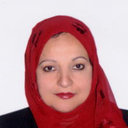Dietary adequacy of Egyptian children with autism spectrum disorder compared to healthy developing children.
Keywords
Coimriú
Although the etiology and pathology of autism spectrum disorder (ASD) is still poorly understood, a number of environmental, anthropological, neurobiological and genetic factors have been related to the pathophysiology of ASD, even the impact of oxidative stress response related to the environment and nutrition intake. Usual recommended dietary habits are based on the combination of behavioral and dietary or nutraceutical interventions together with pharmacotherapy. Investigations about a reliable relationship between diet and ASD are still lacking. The present study aimed at comparing dietary regimens and habits of normally developing apparently healthy children, without diagnosed ASD, with a pediatric population of individuals affected by autistic disorder. Assessments of nutritional and anthropometric data, in addition to biochemical evaluation for nutrient deficiencies, were performed. A total of 80 children with autistic disorder and 80 healthy, normally developing pediatric individuals were enrolled in the study. Parents were asked to complete the standardized questionnaire regarding the different types of food and the proportion of a serving for their children. Biochemical analysis of micro- and macronutrients were also done. Plotting on the Egyptian sex-specific anthropometric growth (auximetric) chart, absolute weights as well as weight-related for age classes, were significantly higher in cases than healthy controls. No differences between groups were observed in regard to total kilocalories (kcal), carbohydrates, and fat intake. A total of 23.8% of children with autistic disorder vs. 11.3% in the healthy control group had a nutrient intake with features below the Recommended Dietary Allowance (RDA) of protein. Children with autistic disorder showed low dietary intake of some micronutrients; calcium (Ca), magnesium (Mg), iron (Fe), selenium (Se) and sodium (Na), also they had significantly high intake of potassium (K) and vitamin C compared to healthy controls. Serum Mg, Fe, Ca, folate and vitamin B12 in children with autistic disorder were significantly low compared with healthy children. Significant positive correlations between serum Mg, Fe, Ca, vitamin B12 and folate and their levels in food were present. These results confirmed that different nutritional inadequacy was observed in Egyptian children with autistic disorder. The evidence reported in the present study should recommend screening of the nutritional status of ASD children for nutrient adequacy to reduce these deficiencies by dietary means or by administering appropriate vitamin and mineral supplements. Nutritional intervention plan should be tailored to address specific needs.


